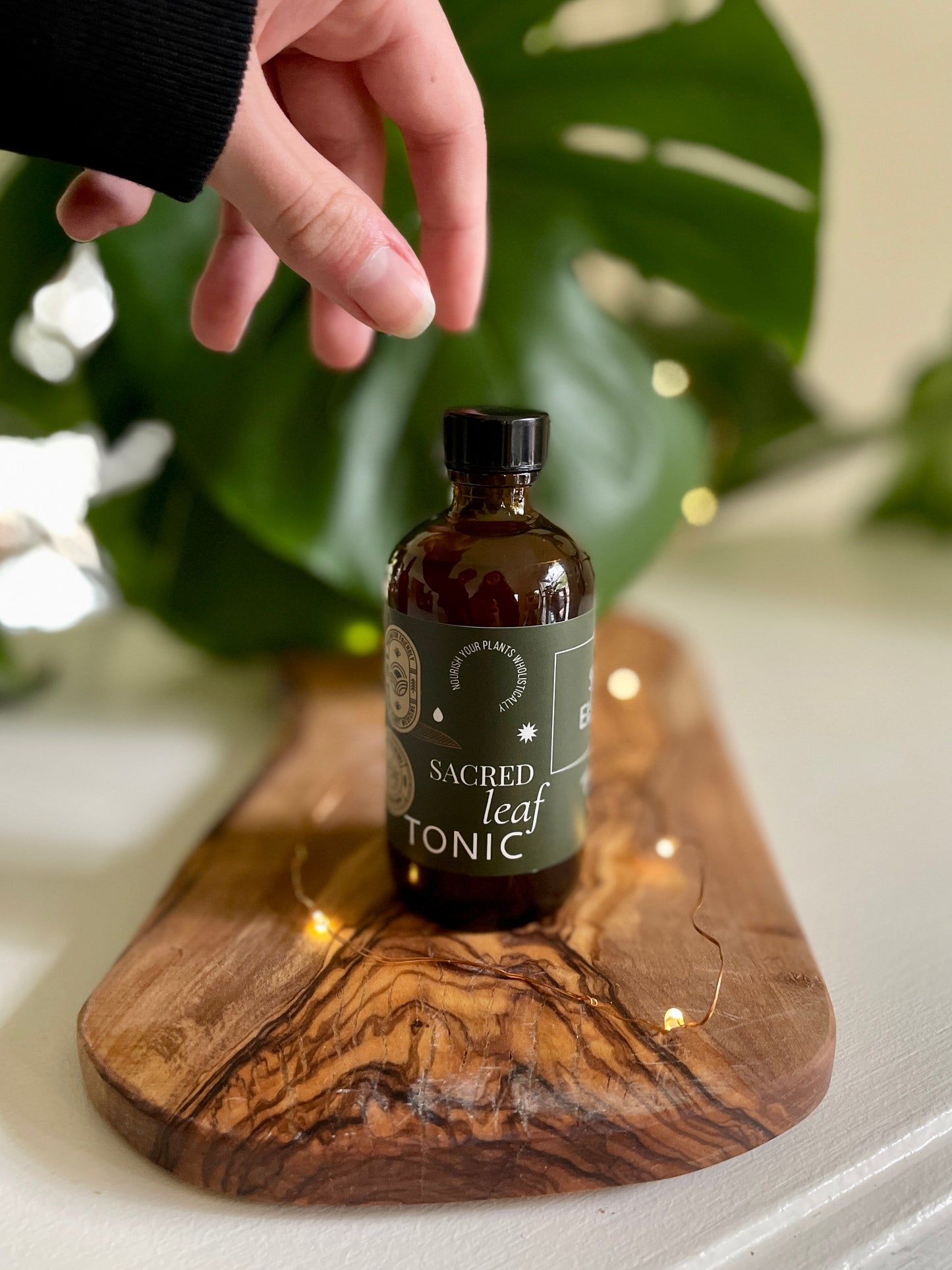
Did you know that virtually every part of the neem tree is useful? Neem is part of the mahogany family as you can see from the rich color of the neem bark. This miracle tree is native to India and has been used throughout history in agricultural practices as well as human and animal wellness.
These days neem is best known as a natural solution to plant care helping to treat and protect houseplants and gardens from pests, disease and pathogens.
That's why we incorporate neem bark, neem seed, and neem leaf extracts into our plant care tonics, harnessing all the benefical properties, going far beyond just neem oil!
Neem bark is cold extracted for several months and then infused into each bottle of our concentrated plant care tonic. A carefully crafted method to fully harness the medicinal benefits of this ancient tree!
Did you know we use neem all the time in our daily lives?
You can find neem on the ingredient list of many pet care products too. Neem bark, resin, seed, wood, leaf, flower and stem are key ingredients in many of our daily hair, body, cosmetic, and dental care products. Neem tree branches are even used as natural toothbrushes! But most of us think of neem as a natural plant pest care product.
Here’s why:
Neem is rich in antifungal, antibacterial, antiviral, and anti inflammatory properties. The list of practical uses the neem tree provides is extensive including how neem benefits the overall health and vitality of our houseplants and gardens.
On its own, neem oil can be a natural and effective treatment for many plant pests and diseases. However, on its own, neem oil has a few drawbacks including a strong scent many people find unappealing and then there's the emulsification issue. Neem is oily and gloppy when mixed with water making the experience of using neem on its own in a spray not the most pleasant experience. In our many years of plant care and urban farming, spraying neem wasn't something enjoyable. Until now....
We changed all of that!


Our tonics contain the world's only whole plant extract of leaf, bark, and seed of the neem tree. We infuse those potent extracts with fresh aloe vera, kelp, live sprouts, mineral rich herbs like comfrey and stinging nettle, and then the magic really happens!
Our tonics contain a blend soapnut berry and fresh aloe vera fillet, slowly distilled over four months! This process not only emulsifies the other oils (jojoba and karanja) in our tonics, it provides another layer of pest care by triggering the plants own natural defense system.
This non toxic, botanical rich formula is safe for indoor and outdoor applications, we even spray it on ourselves! By default our tonics make it easy to avoid spraying pollinators as we always recommend applying when plants are out of direct sunlight and heat, which is when bees and butterflies are most active. Applying Sacred Leaf Tonic during the evening hours when pollinators return home is best and avoids leaf burn, win-win!
Here's how neem works to elevate your plants health and immunity:
- Neem is an insect repellent, insects are not attracted to your plants once applied.
- Neem is a hormone disruptor, pests do not reproduce effectively when in contact with neem.
- Neem is an appetite suppressant, insects who have already set up homes on your plants no longer thrive to effectively grow to reproduce or spread.
- Neem is technically edible making it perfectly safe to apply up until the day you harvest from your garden.
- Neem doesn’t pollute our streams or rivers like synthetic fertilizers and insecticides, instead it actually feeds the earth with healthy, soil boosting nutrients!
Have you ever tried Neem Honey?
Is neem safe for pollinators?
There has been an ongoing discussion about this. Neem has been getting a bad wrap for harming beneficials like butterflies and bees. The problem with these accusations is that the studies have been done on products like Azamax, which is pure azadirachtin (the active compound in neem) not the actual cold pressed, organic oil that we infuse into our tonics.
Instead of harming pollinators, with proper use, our tonics actually create healthier, pest free plants that can better serve pollinators. So here's the real question: when do we ever want to spray anything, even plain water, when butterflies and bees are on and around the plants? Do we want to spray bees with olive oil, or any oil for that matter? Of course not!The residue from Sacred Leaf Tonic are oxidized and evaporates quickly, so even if a bee lands on the plant after application, there is no harm done.
We are honored to share there insights and are so excited for you to try our thoughtful tonics as our community continues to expand, grow and thrive!
Happy growing to you,
Karina and Team SE




How many times a week is the soul tonic to be used or what’s the frecuency please